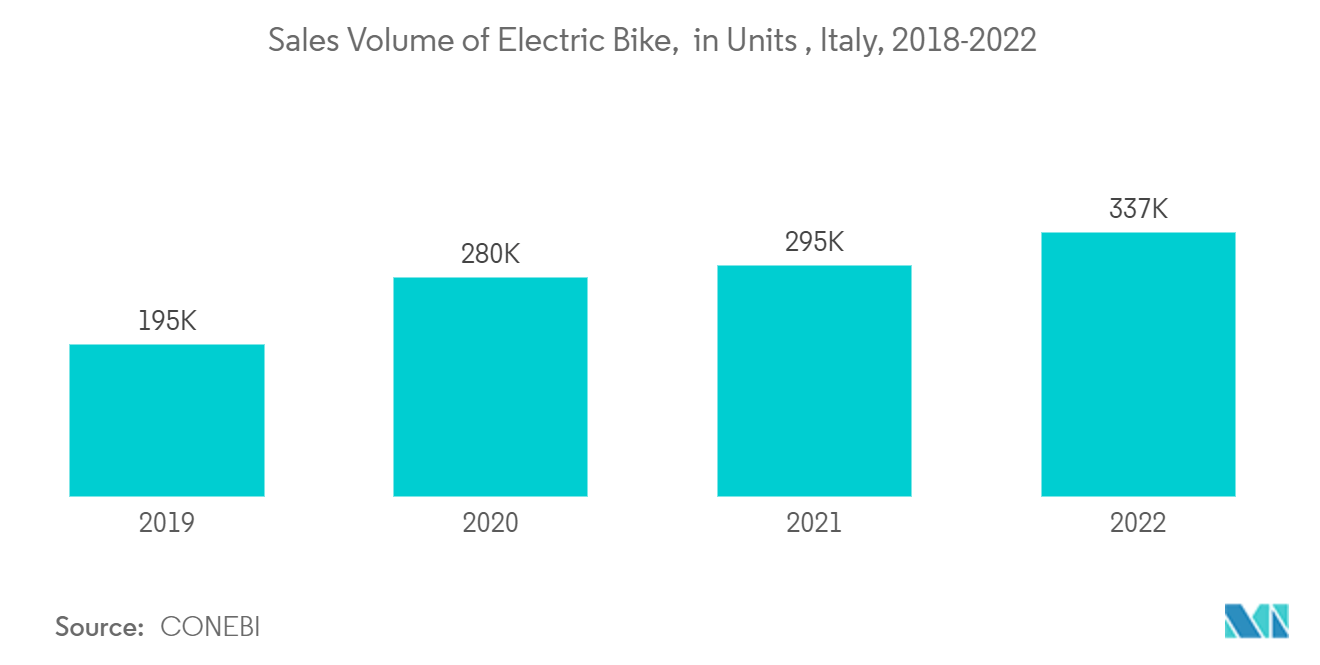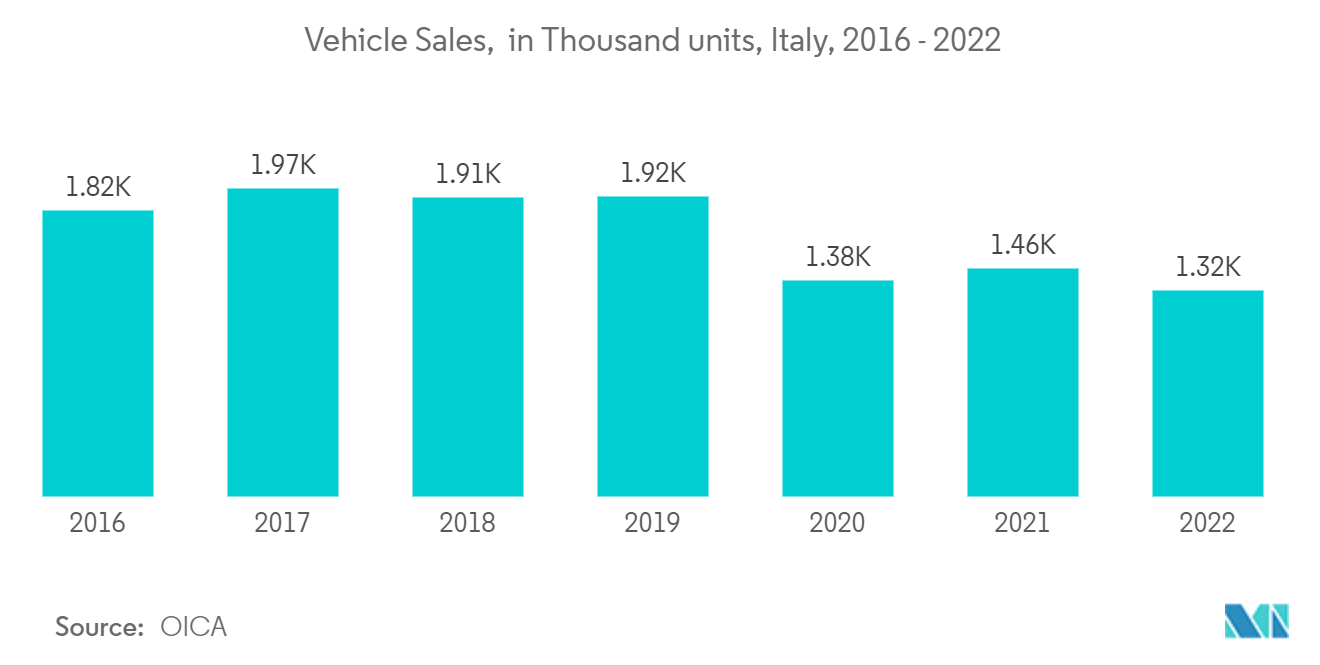Market Trends of Italy Lubricants Industry
Increase in Demand form Automotive Industry
- Lubricants in automobiles are used to reduce friction and wear between two moving parts, enhance fuel economy, and reduce noise and vibration. They aid with the smooth operation of engines and prevent wear and tear.
- Engine oil, transmission fluid, and gear oil are the three types of automotive lubricants. Engine oil lubricates the engine's moving elements, such as the pistons and crankshaft. Transmission fluid lubricates transmission components like gears and bearings. The gears in the differential and transfer case are lubricated with gear oil.
- According to OICA, commercial vehicle sales in Italy reached 189.06 units, and passenger car production reached 1,316.9 units in 2022.
- In addition, according to CONEBI – Confederation of the European Bicycle Industry, the number of electric bicycles sold in Italy reached 337,000 units in 2022, growing by 14 percent compared to the previous year.
- In addition, the Italian government took measures to encourage citizens to buy hybrid and electric vehicles by offering tax discounts, grants, and other forms of financial support.
- The reasons above will have a considerable impact on Italy's demand for lubricating engine oil.

Engine Oil to Dominate the Lubricants Market
- Engine oil is a type of lubricant used to keep the moving elements of an internal combustion engine from rubbing against one another and wearing out prematurely. Its purpose is to lengthen the machine's life while reducing the amount of wear it undergoes. In addition to protecting the engine from corrosion, engine oil helps maintain a clean engine.
- Many different types of engines require engine oils, including automobile engines, motorcycle engines, truck engines, marine engines, industrial engines, agricultural engines, aircraft engines, generator engines, and lawnmower engines, among others.
- Regular oil changes are necessary for hybrid vehicles, just like other cars. For hybrid vehicles, the type of motor oil required is synthetic, engineered to improve fuel economy, and has a longer lifespan than conventional motor oils. This type of oil is typically a 5W-30, formulated to preserve the engine, lessen the number of emissions produced by the vehicle, and increase the vehicle's overall performance.
- As per the OICA, Italy's automotive sector achieved sales of 1.51 million motor vehicles in 2022, with passenger cars constituting 87.45 percent of this figure. However, Italy maintained its position as the fourth-largest vehicle market in Europe during 2022
- Further, according to UNRAE - National Union of Foreign Motor Vehicle Representatives, the Fiat 500e was Italy's best-selling battery-electric vehicle model in 2022, with nearly 6,300 units sold in the country. It was followed by the Smart ForTwo and Tesla Model Y, at approximately 4,550 and 4,300 sales, respectively.
- Similarly, Lubricants play a crucial role in electricity generation, ensuring efficient operation and longevity of equipment like turbines and generators by reducing friction and minimizing wear.
- For instance, in 2022, the net electricity production in Italy amounted to just above 276 terawatt-hours, down from approximately 280 terawatt-hours the previous year.
- All the aforementioned factors can lead to a further increase in demand for engine oils and help it sustain its dominance in the market because as the engine of a vehicle starts to get old, its engine oil demand also increases gradually.

